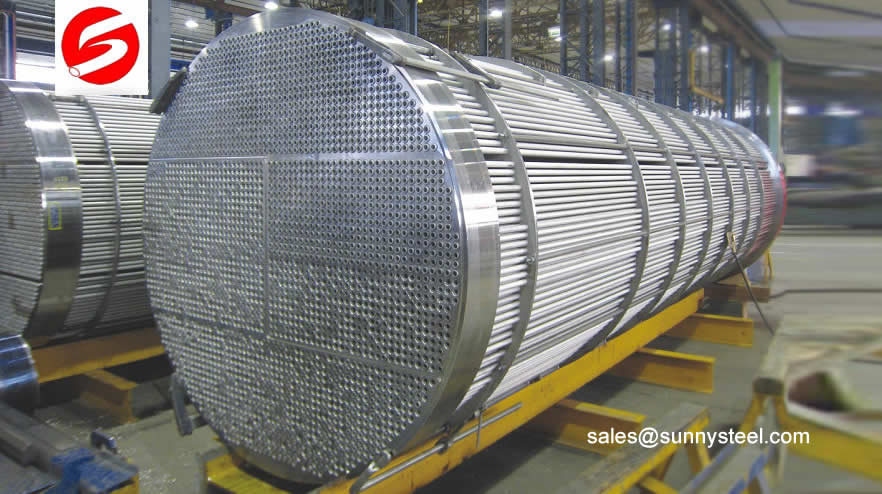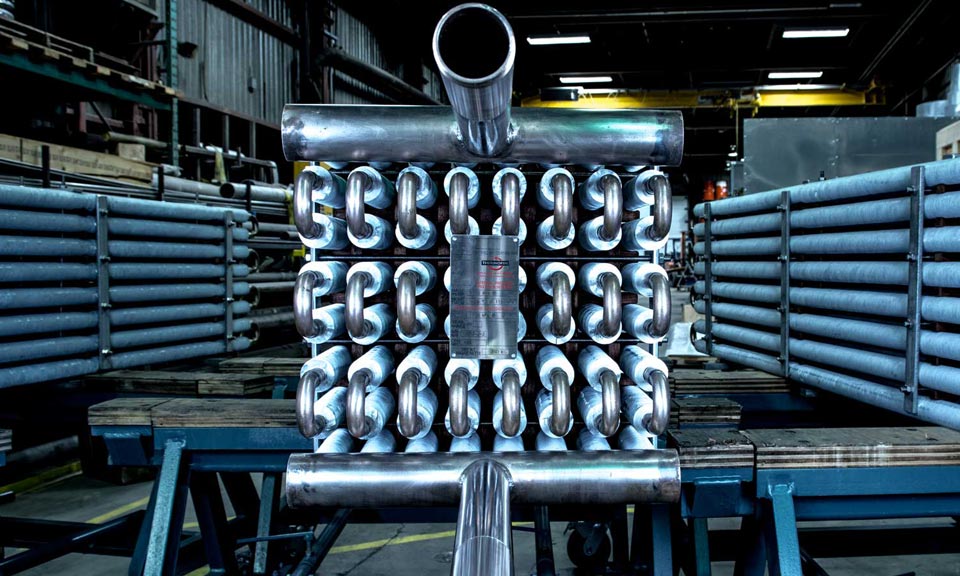防锈的Steel Heat Exchanger is a device used to transfer heat between a solid object and a fluid, or between two or more fluids.

防锈的steel also known as inox steel is define as a steel alloy with a least amount of 10.5%to 11% chromium content by mass. Stainless steel does not flake, corrosion or stain with water as regular steel does, but in spitefulness of the name it is not fully stain-proof. It is also called corrosion-resistant steel or CRES when the alloy type and rating are not exhaustive, particularly in the aviation industry. There are different grades and surface finishes of stainless steel to go with the environment the alloy must endure.
使用不锈钢,其中钢的性质和腐蚀的性质是强制性的。不锈钢与碳钢的不同,通过存在的铬量。在暴露于空气和水分时容易攻击碳钢生锈。
该氧化铁膜(锈蚀)是活性的,通过形成更多的氧化铁来加速腐蚀。不锈钢含有足够的铬以形成氧化铬的无源膜,这防止了进一步的表面腐蚀并阻止腐蚀蔓延到金属的内部结构中。

Fin tubes are used in all sectors asking for an efficient cooling
特性 :
High oxidation-resistance in air at ambient temperature is usually achieved with flourishes of a minimum of 13% (by weight) chromium, and up to 26% is used for harsh environments.[12] The chromium forms a passivation layer of chromium(III) oxide (Cr2O3) when exposed to oxygen. The layer is too thin to be visible, and the metal remains lustrous. The layer is impervious to water and air, protecting the metal underneath. Also, this layer quickly reforms when the surface is scratched. This phenomenon is called passivation and is seen in other metals, such as aluminium and titanium. Corrosion-resistance can be adversely affected if the component is used in a non-oxygenated environment, a typical example being underwater keel bolts buried in timber.
When stainless steel parts such as nuts and bolts are obligatory together, the oxide layer can be scraped off, causing the parts to weld together. When disassembled, the welded material may be ragged and potholed, an effect known as galling. This destructive galling can be best avoided by the use of dissimilar materials for the parts forced together, for example bronze and stainless steel, or even different types of stainless steels (martensitic against austenitic), when metal-to-metal wear is a concern. Nitronic alloys reduce the tendency to gall through selective alloying with manganese and nitrogen. Additionally, threaded joints may be lubricated to prevent galling.
Application :
防锈的steel’s conflict to decay and staining, low maintenance and familiar lustre make it an ideal material for many applications. There are over 150 grades of stainless steel, of which fifteen are most commonly used. The alloy is milled into coils, sheets, plates, bars, wire, and tubing to be used in cookware, cutlery, hardware, surgical instruments, major appliances, industrial equipment (for example, in sugar refineries) and as an automotive and aerospace structural alloy and construction material in large buildings. Storage tanks and tankers used to transport orange juice and other food are often made of stainless steel, because of its corrosion resistance and antibacterial properties. This also influences its use in commercial kitchens and food processing plants, as it can be steam-cleaned and sterilized and does not need paint or other surface finishes.
不锈钢用于珠宝和手表316L.作为常用于此类应用的类型。它可以由任何珠宝商重新完成,不会氧化或变黑。
Some firearms incorporate stainless steel components as an alternative to blued or parkerized steel. Some handgun models, such as the Smith & Wesson Model 60 and the Colt M1911 pistol, can be made entirely from stainless steel. This gives a high-luster finish similar in appearance to nickel plating. Unlike plating, the finish is not subject to flaking, peeling, wear-off from rubbing (as when repeatedly removed from a holster), or rust when scratched.
一些汽车制造商使用不锈钢作为其车辆的装饰亮点。
不锈钢是建筑和工程行业中更标准化的材料之一。